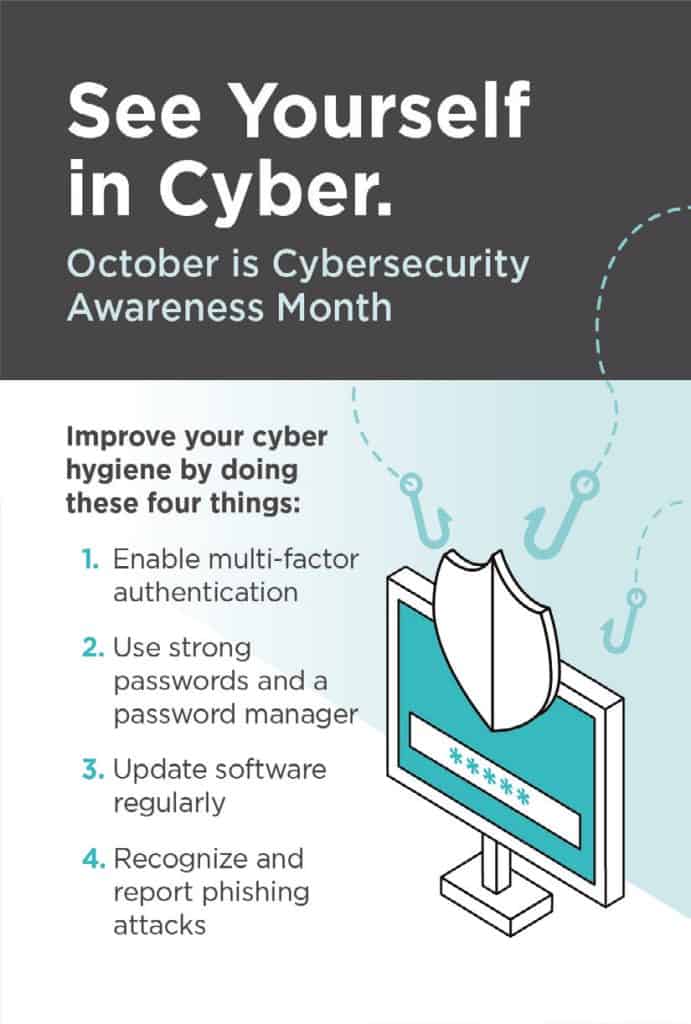 October is Cybersecurity Awareness Month, but safe cyber behavior should be practiced year-round. When we hear about massive data breaches, it can feel overwhelming and lead us to think we’re powerless as individuals to stop cyber criminals. The truth is, there are practical steps we can take to safeguard our devices and data.
October is Cybersecurity Awareness Month, but safe cyber behavior should be practiced year-round. When we hear about massive data breaches, it can feel overwhelming and lead us to think we’re powerless as individuals to stop cyber criminals. The truth is, there are practical steps we can take to safeguard our devices and data.
Here are four easy ways to boost your cyber security:
- Enable multi-factor authentication. Also known as two-step verification, multi-factor authentication adds a second step when logging into an account (to prove you’re really you), which greatly increases the security of the account.
- Use strong passwords and a password manager. Remember, passwords are the “keys” to your personal home online. Your passwords should always be long, unique and complex. Never use the same password twice. If you need help keeping track of all of them, try using a password manager to securely store your passwords for you.
- Update software. Regularly updating software is one of the easiest ways to keep your personal information secure. Most companies provide automatic updates and will send reminders so you can easily install them. If you’re not receiving automatic software updates, set a reminder to do so quarterly. Watch out for fake updates from cyber criminals. Always think before you click.
- Recognize and report phishing attacks. Don’t take the bait when cyber criminals go phishing. The signs of a phishing attack can be subtle, so take time to thoroughly inspect emails. Most phishing emails include offers that are too good to be true, an urgent or alarming tone, misspellings and poorly crafted language, ambiguous greetings, strange requests or an email address that doesn’t match the company it’s coming from. If you think something is “phishy,” report it.
Cyber criminals will always pose a threat, but when we take a risk-based approach to our cyber behavior, we’re creating a safer internet for all. Visit staysafeonline.org for additional cybersecurity tips.